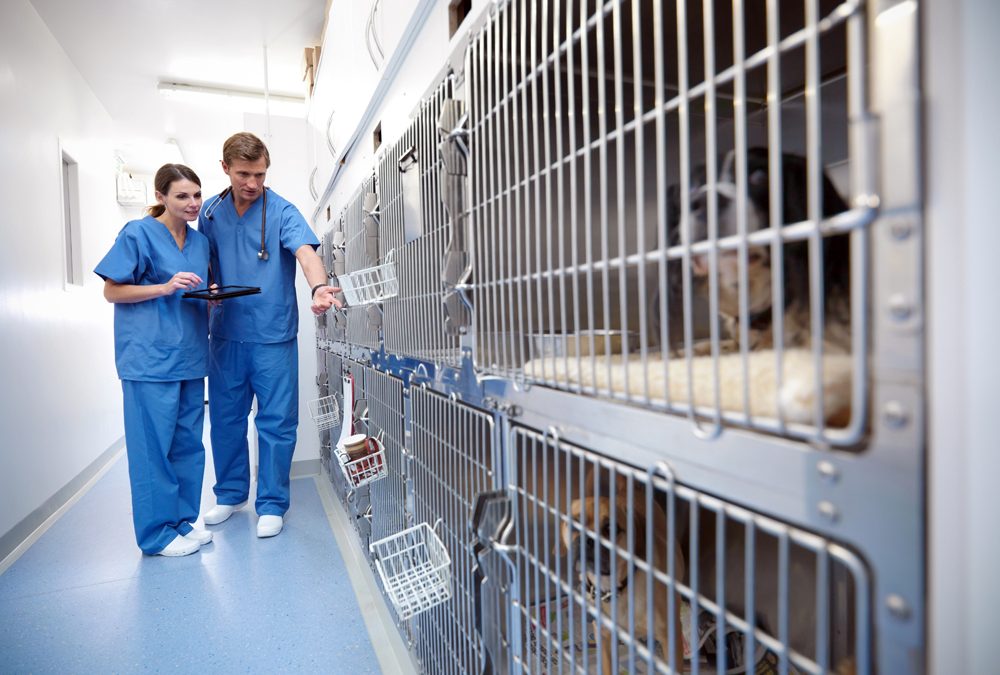Running a Veterinary practice is no small feat. At times, it feels like an uphill battle—an exhausting endeavor akin to herding cats, where the daily grind is a cacophony of chaos with little visible progress.
Picture this: a relentless cycle of howling demands, scattered efforts, and a nagging sense that forward momentum is slipping away. Yet success isn’t out of reach. It hinges on having the right systems, well-defined standard operating procedures (SOPs or your practice’s “Playbook”), a capable team, and—perhaps most critically—something often overlooked: mutual agreements among everyone involved.
Without these agreements, your practice risks becoming a “friction-filled” quagmire—slow-moving, inefficient, and even toxic, draining the energy of everyone from staff to leadership.
What Does Agreement Really Mean?
Let’s break it down. The Oxford Dictionary defines “agreement” as “harmony or accordance in opinion or feeling; the absence of incompatibility between two things; consistency.” At its core, agreement is about harmony—a shared understanding that aligns actions and expectations.
In a Veterinary practice, this translates to consensus on how daily routines, or “plays,” are executed. Without it, friction points emerge like weeds: disagreements sprout, confusion festers, mistakes multiply, and strife becomes the norm.
The fallout? A “drive-by” practice—where owners and managers dread walking through the door each morning, tempted instead to cruise past the clinic and seek solace in the nearest coffee shop, avoiding the mess awaiting inside.
Imagine a scenario: a CSR mis-schedules an appointment, a technician skips labelling a red-top tube, or a veterinarian overlooks a piece of client-communication. Individually, these might seem minor, but when they pile up without resolution, they erode trust and efficiency. Agreement, fostered through clear communication, is the antidote—ensuring everyone knows their role, understands the process, and executes it consistently.
The No. 1 Source of Friction: Mistakes and Type-A Tendencies
Veterinary medicine attracts a specific breed of professional—often Type-A personalities with a relentless drive for excellence. We’re wired to expect things done correctly, not 90% of the time, but 100%.
This passion fuels high standards and remarkable outcomes, but it comes with a flip side: an intolerance for errors. Mistakes—especially when they repeat—become the primary spark for friction in a practice. It’s not just the isolated slip-up that grates; it’s the cumulative weight of recurring blunders that drags a team down.
Picture a Type-A veterinarian noticing a mislabeled sample for the third time in a week. Initially, they might correct it silently, but as the pattern persists, frustration brews—sometimes erupting in sharp words, other times simmering as passive-aggressive silence.
This emotional shift, from productive action to irritation or resentment, ripples outward. Staff feel the tension, morale dips, and the practice owner or manager often steps in to compensate. Rather than addressing the root cause, they take on extra tasks—staying late to redo work, double-check charts, or handle client complaints while the rest of the team clocks out.
Sound familiar? This is the fast lane to burnout, a road too many Veterinary leaders know well.
The Solution: Effective Communication
So, how do we break this cycle? The answer lies in effective communication.
The word itself traces back to the Latin verb communicare, meaning “to share” or “to make common.” At its essence, communication is the bridge between sender and receiver—whether through spoken words, written instructions, gestures, or even tone. It’s the tool that aligns a team, turning a group of individuals into a cohesive unit working toward a shared goal.
In a Veterinary practice, effective communication isn’t a one-off lecture or a dusty manual on a shelf. It’s an ongoing process that gets everyone on the same page—agreeing on how tasks are done, why they matter, and what success looks like.
When communication falters, misalignment creeps in, and friction follows. When it succeeds, the practice hums with efficiency and harmony.
Training: The Bedrock of a Friction-Free Team
The cornerstone of this harmony is training. A well-designed training system ensures every team member understands and can perform the SOPs outlined in the practice’s Playbook. The endgame? A unified team where everyone moves in sync, executing routines with precision. In an ideal world, you’d hand a new hire the SOP binder, they’d read it, and they’d slot seamlessly into the workflow. But reality is messier. People learn at different paces, interpret instructions differently, and need guidance to turn theory into action.
Communication in training isn’t about barking orders or talking at someone. It’s a dynamic, minute-by-minute dance—a give-and-take between the trainer sharing knowledge and the trainee absorbing it. Done right, it builds not just competence but confidence, creating a team that operates like a well-oiled machine.
The Light Bulb Moment: The Sign of Success
The hallmark of effective communication is the “light bulb” moment—that spark of comprehension when understanding clicks into place. Whether it’s a technician mastering a new protocol or a receptionist grasping the scheduling system, this moment signals that the message has landed. Without it, team members are left in the dark—confused, frustrated, and disconnected from the group. They might feel less capable or valued, which only deepens the friction.
Achieving this clarity takes a deliberate approach: a gradient training system that starts small and builds gradually. It blends studying (reading SOPs or watching videos), drilling (hands-on practice), and correction (gentle feedback when needed).
Repetition hones skills into muscle memory, while coaching and encouragement refine them. Pressure—applied thoughtfully—sharpens performance, but it’s clear, kind communication that polishes the edges, fostering a friction-free team. When someone stumbles, correction is key—but it’s a delicate art. People are sensitive beneath their professional exteriors, easily bruised by public criticism.
A golden rule emerges: Praise in public, correct in private.
Summary: Connecting the Dots
Let’s distill what we’ve learned:
- Type-A personalities thrive on perfection but get rattled by repeated mistakes.
- Untrained team members falter, sparking errors and tension.
- Perfectionists often sidestep struggling staff, taking on more themselves and quietly resenting others.
- Most people want to succeed but need training and practice to avoid missteps.
- Effective communication smooths these wrinkles by:
a. Providing clear, written, and video-based SOPs that scale with experience.
b. Using kind, precise dialogue to unify the team.
c. Embedding habits through consistent practice. - Comprehension can stall when:
a. Training overwhelms with too much too fast.
b. Jargon confuses rather than clarifies.
c. Theory outpaces hands-on application. - Public praise boosts morale; private correction preserves dignity.
Action Items: Bringing It to Life
Ready to transform your practice? Here are practical steps:
- Daily Huddle: Kick off each day with a 10-minute meeting before opening. Celebrate yesterday’s wins publicly and map out today’s plan.
- Weekly Staff Meeting: Cap it at 30 minutes. Share key metrics—production, client feedback—keeping it upbeat. Save frustrations for private discussions, not group airings.
- Training System: Develop a gradual program with written SOPs and videos. Encourage a cycle of read, watch, practice—building skills step by step.
- Communicate Freely: If something’s unclear, address it—don’t let unspoken grudges fester.
- Lead with Kindness: Compassion in words fosters trust and openness.
- Praise Publicly, Correct Privately: Reinforce good work visibly; refine errors discreetly.
The Path Forward
A friction-free practice isn’t a pipe dream—it’s a deliberate creation. By weaving effective communication and thoughtful training into your daily operations, you can turn chaos into collaboration.
Mistakes will shrink, morale will rise, and the coffee shop detour will lose its appeal. Instead, you’ll walk into a practice where harmony reigns, and every team member shines—light bulbs glowing bright.

